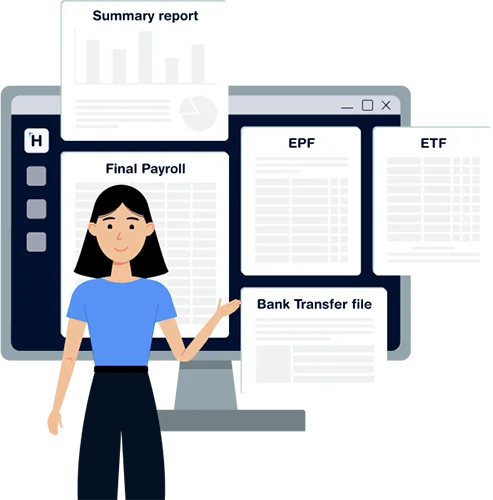Staying compliant with EPF, ETF, and APIT rules is a key part of running payroll in Sri Lanka. But for many SMEs, calculating these deductions every month can be time-consuming, error-prone, and mentally taxing, especially when done manually using spreadsheets.
This is where payroll software offers real, tangible value. Not only does it speed up payroll runs, but it also ensures that your calculations are accurate, consistent, and fully aligned with current laws.
If you’re considering automating your EPF, ETF, and APIT processes, here are five tips to make the transition smoother and more effective.
1. Choose Payroll Software with Built-In Statutory Compliance
Not all payroll systems are built with Sri Lankan regulations in mind. Before you commit to a product, ensure it includes support for EPF (8% employee, 12% employer), ETF (3%), and APIT tax slabs.
The best systems automatically apply these rates and update them when new government directives are issued, removing the need for you to track changes manually.
Bonus tip: Look for a system that provides separate breakdowns in payslips and summary reports. That way, employees and employers can clearly see how each deduction was calculated.
2. Set Up Employee Profiles Correctly from the Start
For EPF, ETF, and APIT to be calculated correctly, employee profiles must be properly set up. This includes:
- Accurate NIC numbers
- Salary structure (fixed, variable, allowances)
- Employment type (full-time, part-time, consultant)
- Tax status and income brackets
Misclassifying employees or missing required data can lead to incorrect deductions, which creates issues during audits or when employees apply for loans.
Spend time during your onboarding process to gather complete details. Once set, the payroll system will apply the correct contributions automatically.
3. Automate Salary Component Mapping
Most payroll software allows you to define salary components such as basic pay, transport, performance incentives, or housing, and flag which ones are EPF/ETF-applicable or taxable under APIT.
Mapping these components ensures the system calculates deductions based only on the relevant portions of salary. This is especially helpful for SMEs with varying pay structures or multiple allowance types.
For example, a bonus may be APIT-applicable but not EPF-applicable. Automation removes the need to check and recalculate this each time.
4. Keep Audit Trails and Reports Readily Accessible
Automating statutory calculations isn’t just about making payroll faster, it also prepares you for audits, Labour Department reviews, or end-of-year reconciliations.
Make sure your payroll system:
- Keeps records of monthly EPF/ETF and APIT contributions
- Generates summary reports for each pay period
- Tracks who processed the payroll and when
With this data available in just a few clicks, you’ll save time and reduce risk during reviews or compliance checks.
5. Test Your First Two Months Carefully
When switching from manual to automated payroll, run side-by-side checks for at least two months. Compare the system’s calculations with your previous spreadsheet results to ensure:
- The correct percentages are applied
- All employees are included
- Net salary outcomes are accurate
Once you’ve verified that the numbers line up, you can confidently rely on the system moving forward.
Automation Isn’t Just Easier, It’s Smarter
For SMEs in Sri Lanka, automating statutory deductions isn’t just about saving time. It’s about ensuring accuracy, reducing risk, and building a compliant payroll foundation that grows with your business.
Whether you’re just getting started or handling payroll for a team of 25, automating EPF, ETF, and APIT is one of the simplest ways to run payroll better.



